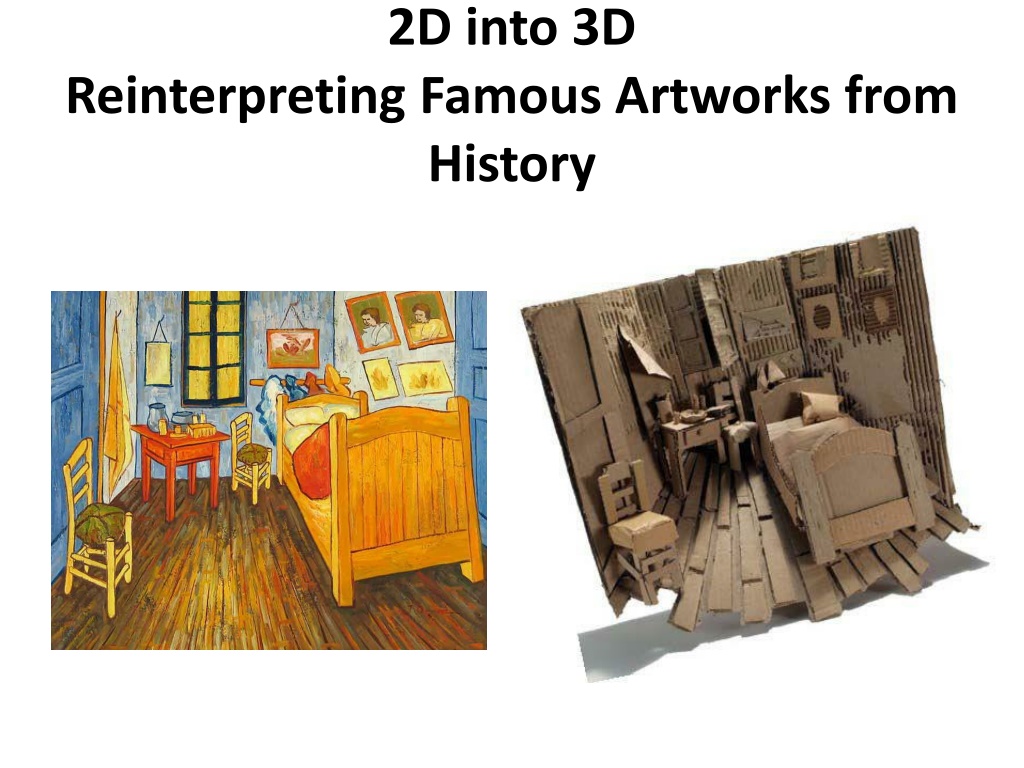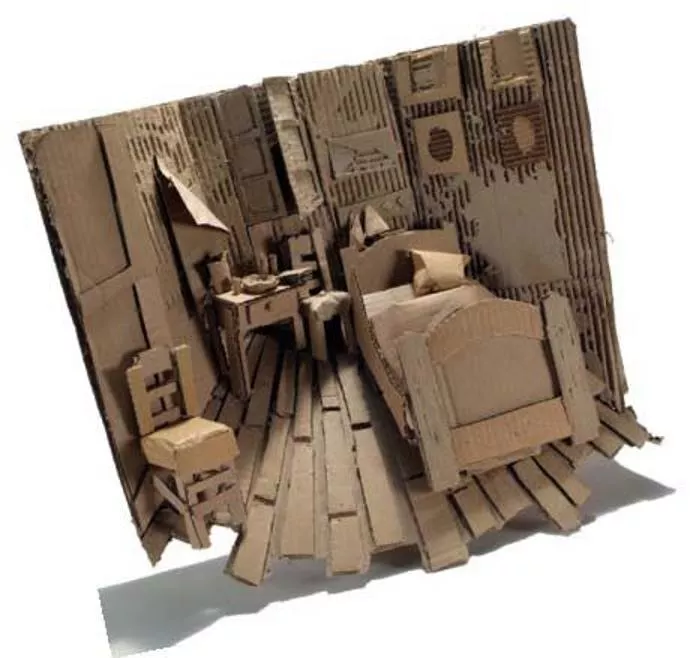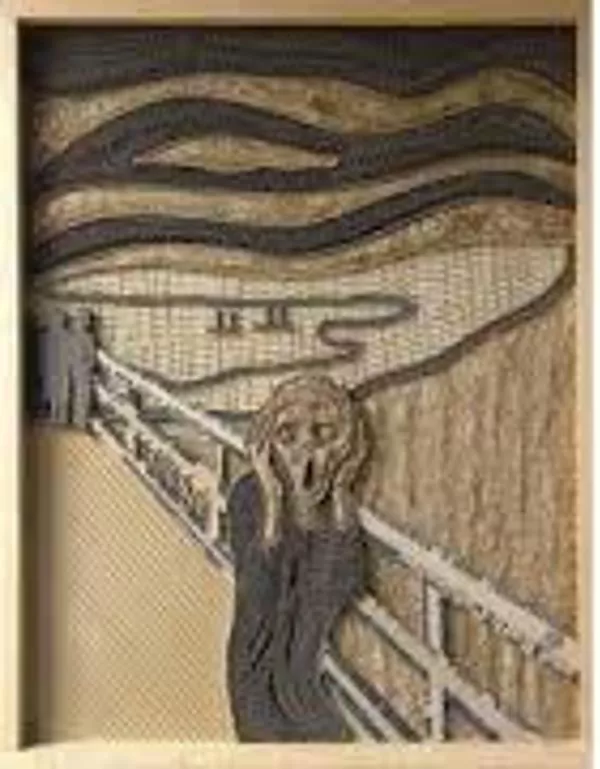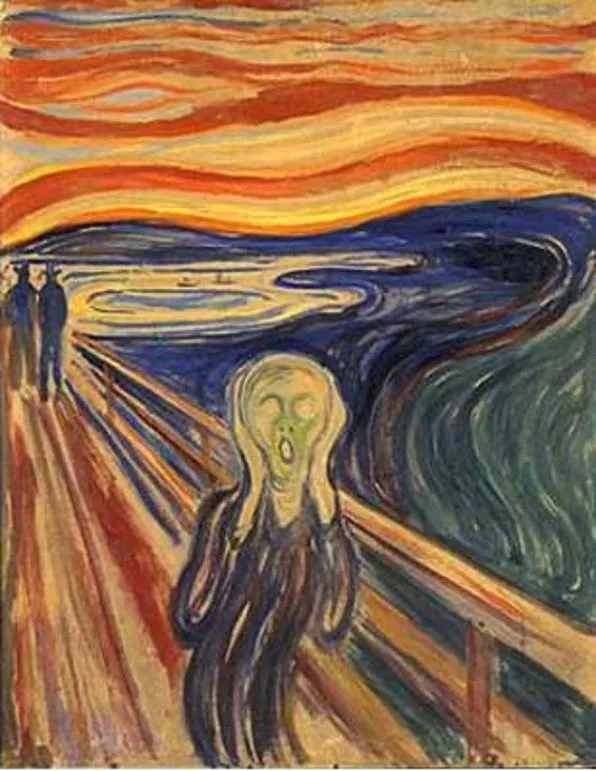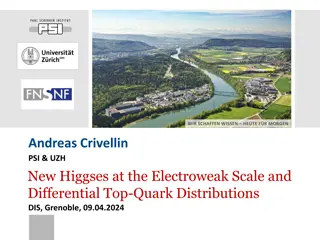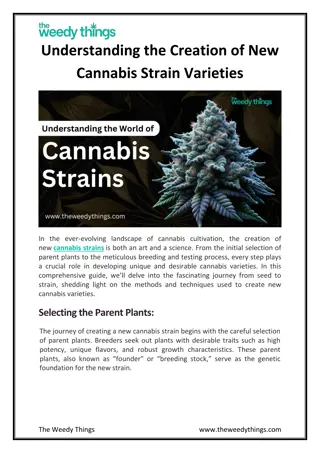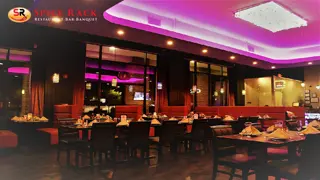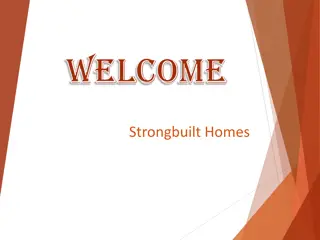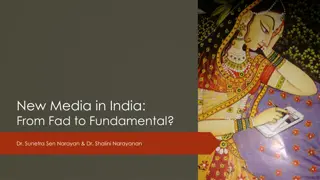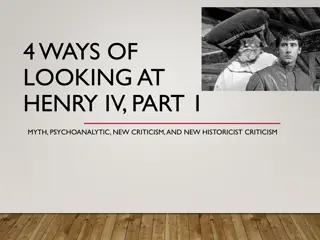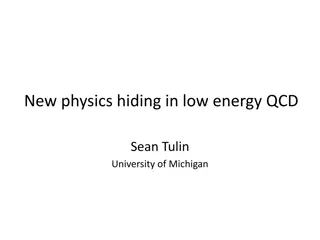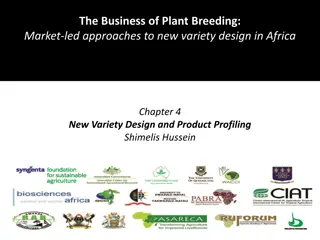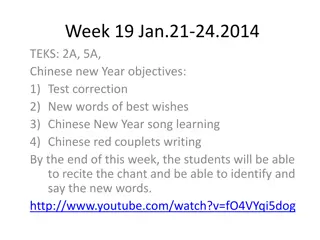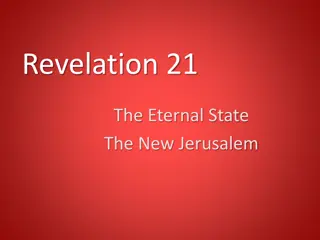Exploring the Transformation of 2D Artworks into 3D Interpretations
Delve into the reinterpretation of famous historical artworks, transforming them from 2D to 3D representations. Learn about concepts like foreground, middle ground, and background in compositions, as well as the techniques of relief sculpture, texture, depth, and space in art. Discover the intricate details that bring art to life in a whole new dimension.
Download Presentation

Please find below an Image/Link to download the presentation.
The content on the website is provided AS IS for your information and personal use only. It may not be sold, licensed, or shared on other websites without obtaining consent from the author. Download presentation by click this link. If you encounter any issues during the download, it is possible that the publisher has removed the file from their server.
E N D
Presentation Transcript
2D into 3D Reinterpreting Famous Artworks from History
https://encrypted-tbn2.gstatic.com/images?q=tbn:ANd9GcS133JfdYwvmxftdYKkM-qdg0lRVhlFo5a_PBRJBzD9XhUxNUE-YQhttps://encrypted-tbn2.gstatic.com/images?q=tbn:ANd9GcS133JfdYwvmxftdYKkM-qdg0lRVhlFo5a_PBRJBzD9XhUxNUE-YQ
http://3.bp.blogspot.com/-li8TVH2WTIg/Td5nPFrQ9QI/AAAAAAAAACE/N5GY2miekKE/s320/carboard+sample+1.jpghttp://3.bp.blogspot.com/-li8TVH2WTIg/Td5nPFrQ9QI/AAAAAAAAACE/N5GY2miekKE/s320/carboard+sample+1.jpg
Vocabulary Foreground: the part of a view that is nearest to the observer, especially in a picture or photograph. the part of a composition that appears closest to the viewer. Middle ground: the part of a composition between the foreground and background. Background: the part of a composition that appears to be farthest from the viewer.
Relief Sculpture To create a sculpture in relief is to give the impression that the sculpted material has been raised above the background plane Bas relief (Low relief): the sculpture projects only slightly from the background surface High relief: the sculpture projects at least half or more of its natural circumference from the background, and may in parts be wholly disengaged from the ground, almost becoming sculpture in the round.
Texture: A term describing the surface quality of an artwork that can be seen and felt. be rough or smooth, soft or hard. Depth: The apparent distance from front to back or near to far in an artwork. When depth refers to an object's smallest dimension, then this distance can also be called its thickness. When an object or space is principally viewed from above, its depth can also be its height. If an objects' depth is its greatest dimension, then this distance can also be called its length. Space: The term defining the area between and around objects. The space around objects is often called negative space; negative space has shape. Space can also refer to the feeling of depth. Textures can
